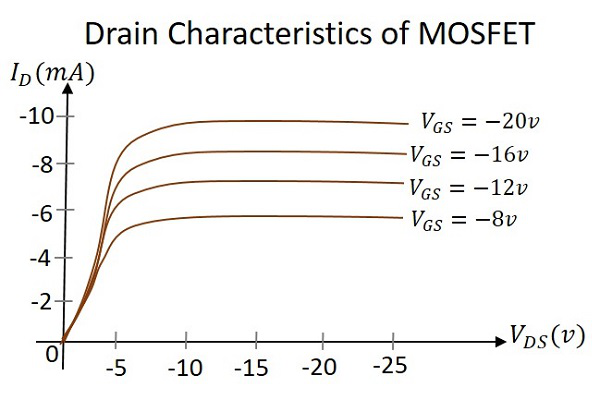Now MOSFET is classified into two types depletion type MOSFET “D-MOSFET” and Enhancement type MOSFET “E-MOSFET. Both of these MOSFET’s are widely used in electronics, integrated and embedded circuits. The MOSFET has 4 terminals Drain, Gate, Source and Body. However, the body terminal is always connected with the source terminal. MOSFET gate current, i G A. Time that the MOSFET will turn on, t O N us. The resistor (R G 2) value that must be added to the MOSFET gate and achieve the above two estimations Ohm The average power (P a v e) which must be endured by R G 2. This value must be employed instead of the pulse power. MOSFET – is an acronym for Metal Oxide Semiconductor Field Effect Transistor and it is the key component in high frequency, high efficiency switching applications across the electronics industry. The metal-oxide-semiconductor field effect transistor (MOSFET) is the important semiconductor device for digital and analog integrated circuit designs. Its major asset from digital perspective is that it performs very well as a switch and it introduces very few parasitic effects. 2) By using basic electronics components – In this method a test circuit is designed to check the working status of the MOSFET. Diode Test In this method, a multimeter with diode mode is requuired to test the MOSFET.
- Mosfet Symbol In Electronics
- N Mosfet Vs P Mosfet
- Mosfet Electronics
- Electronics Mosfet Biasing
- What Is A Mosfet Transistor
Mosfet Symbol In Electronics
Shown above is a typical MOSFET transistor circuit.
We're going to now show how to perform DC analysis on this MOSFET circuit so that we can find crucial DC values of the circuit.
When doing DC analysis, all AC voltage sources are taken out of the circuit because they're AC sources. DC analysis is concerned only with DC sources. We also take out all capacitors because in DC, capacitors function as opencircuits. For this reason, everything before and after capacitors are removed, which in this circuit includes resistor, Rs.
N Mosfet Vs P Mosfet
Below is the schematic of the DC equivalent of the mosfet circuit above:


Now let's do the calculations for DC analysis. Vgs is the voltage that falls across the gate and the sourceof the mosfet transistor. It is crucial to calculate because in order to solve for Ids, the current from the drain to the source,Vgs must be known.
In order to solve for Vgs, Vg, the voltage at the gate, and Vs, the voltage at the source must be known:
Mosfet Electronics
Now that we've solved for Vgs, we now solve for Ids. The formula for Ids is:
Kn and Vtn are normally givens that you just plug into the equation.
Once you solve for Ids, you will get two currents from solving that quadratic equation. The current that produces a Vgs which is greater than Vtn is the real current of the circuit and the othershould be eliminated.
Electronics Mosfet Biasing
Now we calculate Vds and the Q-point:
What Is A Mosfet Transistor
